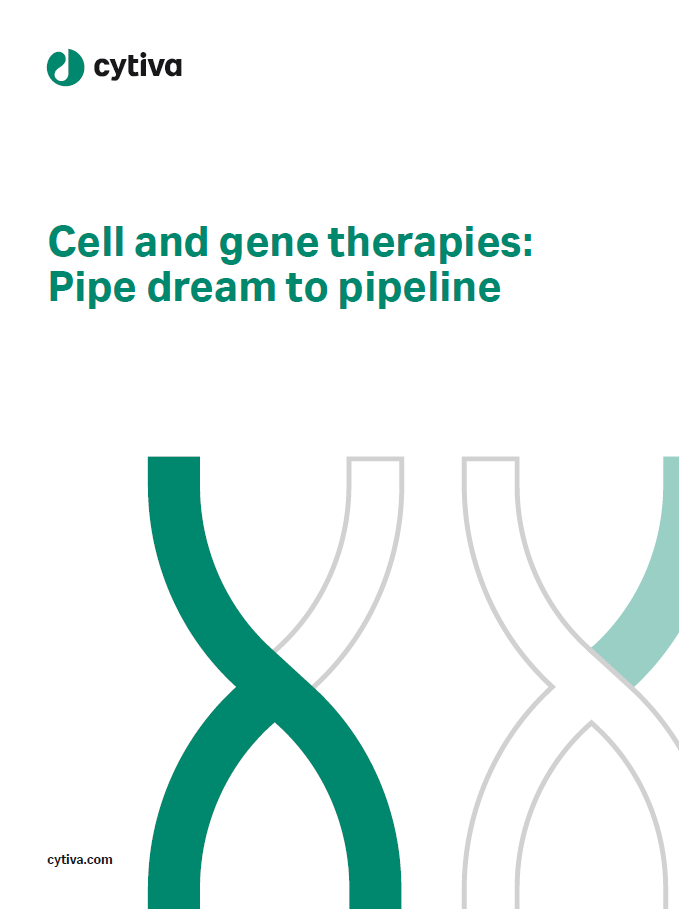

In the last few decades, the rise in cell and gene therapy development has brought about several high-profile successes, but many companies fall short at the earlier stages of therapeutic development. One common factor faced by several of these companies is manufacturing challenges and a failure at scaling up.
The FDA approved the first autologous dendritic cell therapy, Dendreon Pharmaceuticals’s Provenge (sipuleucel-T), in 2010. Since then, major strides have been made in the cell therapy space. The first chimeric antigen receptor (CAR)-T cell therapy, Novartis’ Kymriah (tisagenlecleucel), was approved in 2017, which also doubled as the first approval for a gene therapy in the US, and several other countries.
Yaky Yanay, the CEO of the Israeli cell-based product company Pluri, says the cell and gene therapy field has rapidly evolved in recent decades. “Understanding what the cells are doing, the mechanism of action, and the secretion has changed the game. Before, we did not have the ability to look closely at cells and to understand the level of complexity and the capabilities of these tiny inadmissible organisms,” says Yanay.
GlobalData reports that there are currently 2,016 cell therapies in clinical development globally, with 141 of these currently being in Phase III clinical trials.
However, despite improvements in the knowledge surrounding the development of advanced therapy medicinal products (ATMPs), many companies have struggled to surpass the earlier stages of development. Seth Ettenberg, CEO of the Massachussets-based cell therapy company BlueRock Therapeutics, says, “There are some growing pains in scaling and manufacturing.” He says that the “learning curve” for this can be steeper in cell and gene therapy development than for other modalities as cost and logistical problems arise.
Barriers to later phases
In a November 2023 Linkedin post, Jim Burns, the ex-CEO at the RNA-targeting gene therapy company Locanabio, announced plans to discontinue the biotech’s operations by the end of 2023. He cited the US biotech’s reasons for closure as “the time and capital required to deliver clinical data in the current challenging funding environment”. Before its discontinuation, the company had raised $100 million in a Series B funding round.
Similarly, in August 2023, the Vancouver, Canada-based cell therapy company Notch Therapeutics announced plans to scale back its operations, closing down its Vancouver center and laying off 25 employees. In the LinkedIn post, the company noted, “We are making changes to sharpen our focus and ensure we remain operationally efficient during these externally challenging and turbulent times.”
Other companies like Boston, Massachusetts-based Clade Therapeutics and Singapore-based Tessa Therapeutics were among the companies winding down ATMP operations in 2023, with the latter biotech closing down completely. Even larger companies were not exempt, with Takeda Pharmaceuticals discontinuing its early research projects involving adeno-associated virus (AAV) gene therapies last year.
Ettenberg explains that BlueRock Therapeutics has largely remained stable due to its connection to Bayer, but he says that difficulties remain for many companies lacking support. Bayer acquired the smaller biotech in August 2019. “What I hear from many of my colleagues is that manufacturing scalability and the unpredictability of expenses have been difficult to deal with. Investors are often telling us that risk capital is more difficult to come by these days,” says Ettenberg.
At the London Advanced Therapies conference held on March 19–20, experts discussed how cell and gene therapy biotechs are facing these challenges.
At an investment-focused panel, Robert Balfour, PhD, an investment director at Alsa Ventures, said, “There has been a downturn in the market as a lot of companies are fundraising, so every investor has a lot of choice.”
GlobalData reports that private biotech venture financing decreased in 2023, falling by 43.2% when compared to 2022, and demonstrating a 52.3% reduction in comparison to 2021. With so many companies seeking funding in the current environment, proof of the science and scalability capabilities are paramount.
Overcoming challenges
Yanay explains that many companies fail to scale up following successful Phase I and II readouts. Small details like incorrect procedures with potency assays or small intricacies related to ingredients can lead to a lack of scalability, he says. Potency assays are tests performed as part of good manufacturing practice (GMP) requirements for ATMPs. A March 2024 EMA draft guidance reflects the requirement for vigorous testing, advising companies to test aspects such as the microbiological quality of procured cells and the virality of cell lines, and in the case of RNA and DNA vectors, to test genetic identity and integrity.
“Most of the industry started with too high of a bar when we did not have the depth of knowledge that we have today to understand what to do with the cells,” adds Yanay. The CEO says that Pluri chose to invest “hundreds of millions of dollars” into its manufacturing technology over the years. The company has over 140 active and granted patents for its manufacturing platform. Furthermore, at the beginning of 2024, Pluri opened up its manufacturing capacities to offer contract development and manufacturing services to other pharmaceutical companies.
However, the choice to take on in-house manufacturing can be a costly decision for a biotech. A 2018 Frontiers in Medicine paper estimated that cell therapy scale-up manufacturing solutions would have to produce batches of up to 2,000L in single-use disposable formats, limiting a biotech’s options for upstream hardware. Also, for cell therapies derived from pluripotent stem cells (PSC), the authors estimated that dosing requirements could be up to 109 cells per patient. For larger indications where the therapy could reach hundreds or thousands of patients, companies could have to generate 1011–1014 cells annually, putting a large cost burden on operations. A June 2023 study calculated the cost of developing a new cell or gene therapy as approximately $1.94 billion, taking into account the research and development attrition rate.
Paolo Morgese, the head of European Public Affairs at the Alliance for Regenerative Medicine, says that regulatory support for the industry would be a major boon for the scaling-up process, encouraging regulators to collaborate with the pharma sector to propel companies through the later stages, allowing access to new treatments.
At the Advanced Therapies conference, Sean Russell, the head of translational project management and regulatory affairs at the non-profit organisation Fondazione Telethon, said it was important to consider the impact on patients. He explained that the failure of certain companies and their cell and gene therapy assets can often be a massive disappointment for patients. “When we show a therapy to be effective and then we end up divesting it…we often give patients some trauma,” said Russell.
Morgese adds that the “market failure” of certain drugs reflects a “failure in the ecosystem” that is yet to be resolved. He explains that many companies will continue to struggle as long as healthcare authorities remain reluctant to carry the cost burden related to cell and gene therapies in order to get innovative treatments to patients.
Cell & Gene Therapy coverage on Pharmaceutical Technology is supported by Cytiva.
Editorial content is independently produced and follows the highest standards of journalistic integrity. Topic sponsors are not involved in the creation of editorial content.




